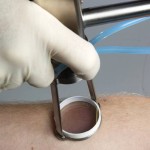
While laser hair removal is a good treatment method for many, the marketing and advertising claims frequently do not give an accurate reflection of the facts and the science behind it.
Laser hair removal should be best thought of as a hair reduction method. While some patients do get a high percentage of permanent hair reduction, the concept of permanent and complete elimination of hair is false. The biology of hair growth and the way the laser light works makes this very difficult to achieve. When laser hair removal first came onto the scene in the early 2000s, this was naively widely touted. We now know better. If you can live with 50% to 90% reduction in hair, then laser hair removal may be for you.
Not all hair responds well to the laser. Like a black colored car that attracts sunlight and gets very hot, it is all about driving heat down to the growing hair bulb. For this reason, dark colored hair with fair colored skin always works the best. Blonde, gray, white, and red colored hair is not reduced as much because it is a ‘poor’ target. Expect less hair reduction if this is your hair color. Conversely, dark colored skin picks off some of the laser light before it can get to the hair bulb. (which actually is below the skin) Because higher energies of laser light is needed to get past the pigment in the skin, there is a slightly higher risk of skin burns and irritation.
Laser hair reduction requires a series of treatments to be effective. Because the laser will only knock out hairs in an area that are actually growing (less than 10% of your hair in any area is actually active at any one time), a series of treatments over time is needed. A general rule is that it will take 5 or 6 treatments over a 6 month period to get the best result. So while spring may bring hair removal to mind, you ideally should have started last fall!
Lair hair treatments are not painless…no matter what the advertisements say. The laser light is a hot treatment and it is not like having a massage or manicure. If your laser treatment is or was painless, I can also guarantee you that it will not work. While todays lasers have chilled methods to cool the skin during treatment, topical anesthetics are still necessary. For this reason, a laser hair appointment may require an hour or so with the first half being the application of a numbing cream and then time to let it work.
Long-term maintenance treatments may be needed in many cases. Hair that was initially suppressed by laser treatments can get activated later in life with hormonal changes or medications that one may be taking. While this seems to be contradictary to the way most people think lasers on hair works (frying the hair bulb so that it is ‘killed’), the reality is that the laser changes the hair growth cycle and teaches it to grow differently. Often times, it changes a thick dark hair to a fine and clear vellus hair. But certain changes in life can reactivate its original growth cycle making you see hair ‘coming back’.
Laser hair treatment is commonly done for both women and men. (men and back hair make up about half of the patients that we see) While it can be very effective for the right person, proper knowledge and education will determine if laser hair treatments are a good or better value over traditional waxing methods.
Dr. Barry Eppley
Indianapolis, Indiana


